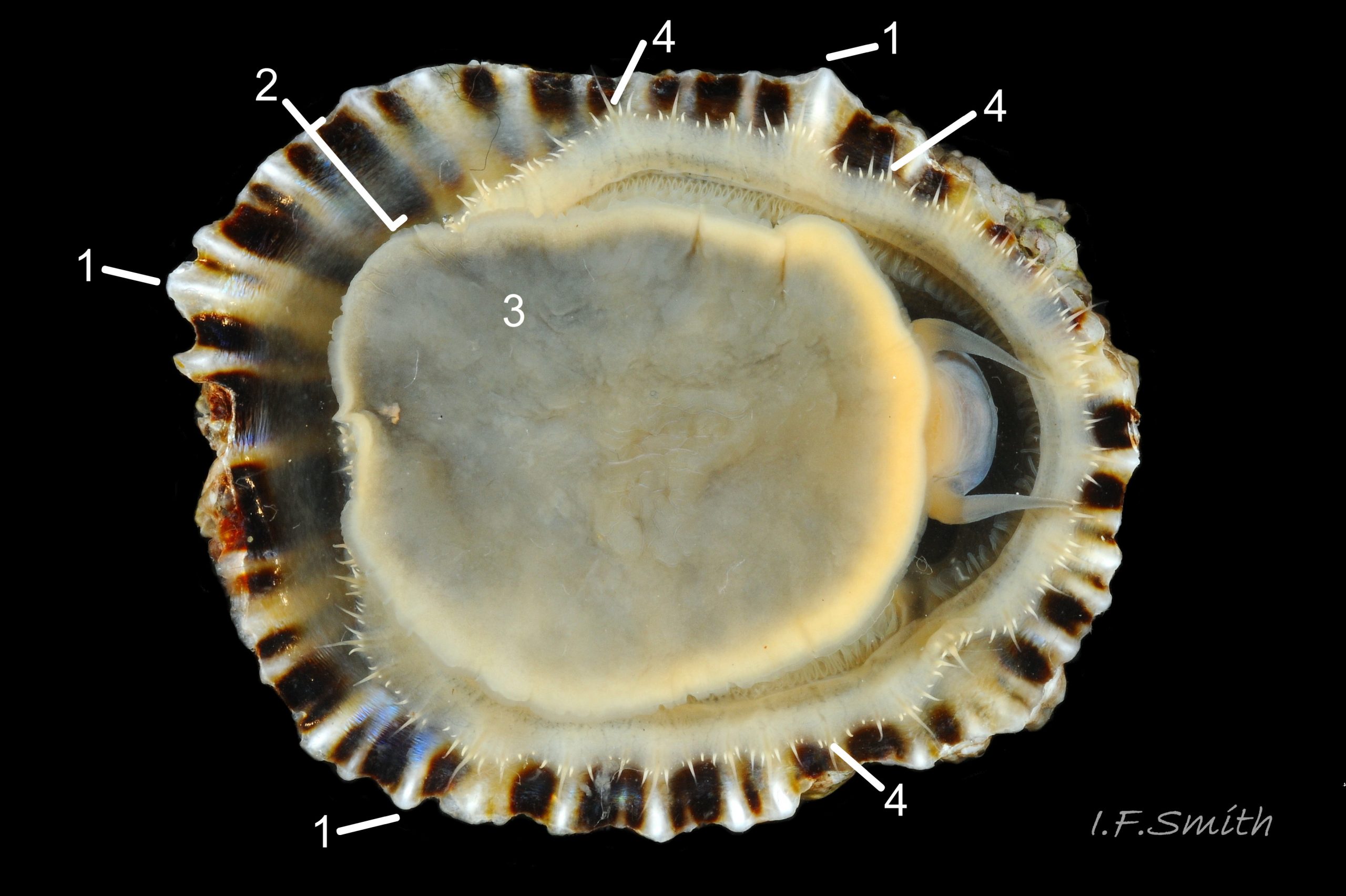Frequent features of typical P. depressa in Britain.
1: unglazed, chalky-white linear-streak within whitish ray where rib point not eroded away.
2: transparent mantle-skirt-layer reveals coloured rays stretching from aperture-rim to opaque-whitish pallial-groove-band [but can occur in P. vulgata and young P. ulyssiponensis].
Ambiguous features on this specimen.
3: P. vulgata frequently has soles as dark as this, and occasionally even darker. Typical P.depressa have much darker pitch-brown or black soles.
4: Robust pigmented pallial-tentacles eliminate P. vulgata [when fully extended, finer, more numerous and translucent on it]. Buff/off-white pigment more usual on P. ulyssiponensis than on P.depressa [usually chalky-white, but off-white sometimes].
For further intermediate features of this specimen see 36 Patella depressa – probable. Features intermediate between spp. Lleyn, Wales. October 2015. Leg. S. Payne.
Forms occur that are morphologically intermediate between species-descriptions of rock-grazing Patella which can only be positively identified by sequencing DNA or allozyme study. Intermediates result from similar environmental factors affecting different species in similar ways and are not hybrids (Sanna et al., 2011 and Sá-Pinto et al., 2007). This specimen was found in a position more usual for P. vulgata so it might be a P. depressa, or even P. ulyssiponensis, that has managed to survive in conditions more suited to P. vulgata. Intermediates are more frequent near eastern limit of British distribution in Isle of Wight, perhaps because conditions are not optimal (Fretter and Graham, 1994). For the purpose of recording for distribution schemes it is advisable to disregard intermediates unless DNA or allozymes can be employed, especially beyond or on the limits of known distributions. Though the illustrated specimen is probably P. depressa the find was not entered into a distribution scheme because of the uncertainty, especially as it would extend the known northern limit within Cardigan Bay.
OTHER SPECIES ALBUMS
marinvert.senckenberg.science/image-browse/

